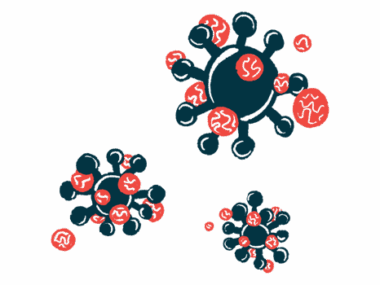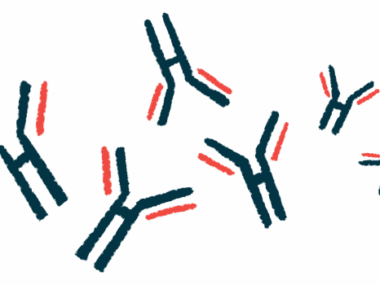The medication that’s changed my journey with EGPA disease
In praise of Fasenra, a treatment so satisfying it makes me want to dance
Written by |

Note: This column describes the author’s own experiences with Fasenra (benralizumab). Not everyone will have the same response to treatment. Consult your doctor before starting or stopping a therapy.
Are you on Instagram? I’ll admit it — my wife and I can’t stop watching those silly little dances. Our favorite? The “Chicken, Banana” dance. We laugh every time. There are probably a million versions out there, and every single one makes us laugh.
So why am I talking about a viral dance in a column about a rare disease? Because in our house, we’ve created our own remix: “Chicken, Banana, Fasenra.”
Why? Because Fasenra (benralizumab) has completely changed my experience of living with eosinophilic granulomatosis with polyangiitis (EGPA) — and by extension, it’s changed my wife’s experience, too. When you live with a rare, relentless condition such as EGPA, every win counts. And this one feels worth dancing about.
Why Fasenra works so well
Here’s something you might not know: People with EGPA are often excluded from ANCA-associated vasculitis research studies. We’re a small cohort, and drug research is wildly expensive, sometimes billions of dollars per treatment, according to the “Rare Candor” podcast. That’s why 95% of rare diseases still have zero approved medications. None. Zilch.
So the fact that EGPA has two primary medications that are approved and can help — Nucala (mepolizumab) and Fasenra — is nothing short of remarkable.
Every day, I feel grateful for the researchers, scientists, and advocates who pushed for these breakthroughs. I count myself lucky, and I advocate fiercely for continued innovation and legislation such as the Orphan Cures Act to make even more treatments possible. But that’s a story for another time.
So what is Fasenra, exactly?
Both Nucala and Fasenra work by targeting IL-5, the pathway that fuels those overactive eosinophils causing chaos in our bodies. But here’s the cool part: Fasenra goes a step further. It doesn’t just target the eosinophils; it also activates natural killer (NK) cells.
Let me say that again: natural killer cells. As someone living with EGPA, I can’t tell you how satisfying it is to imagine those NK cells charging into battle, taking down the very things that make me sick. Honestly? It’s kind of thrilling.
I’ve always believed that patient education is power. We can’t advocate for ourselves or our community unless we understand the science behind what’s happening in our bodies and how treatments work to help us heal.
Why I’m promoting a livestream
That’s why I’m excited to alert you to a patient-focused livestream set for noon (Eastern Standard Time) on June 26. Titled “Fasenra: Double Action for EGPA,” its registration is now open.
This livestream will be more than just a science lesson; it’s a chance to understand what’s happening inside us, feel empowered, and be part of something bigger.
Let’s learn together. Let’s advocate together. And maybe let’s dance a little, too.
Note: ANCA Vasculitis News is strictly a news and information website about the disease. It does not provide medical advice, diagnosis, or treatment. This content is not intended to be a substitute for professional medical advice, diagnosis, or treatment. Always seek the advice of your physician or other qualified health provider with any questions you may have regarding a medical condition. Never disregard professional medical advice or delay in seeking it because of something you have read on this website. The opinions expressed in this column are not those of ANCA Vasculitis News or its parent company, Bionews, and are intended to spark discussion about issues pertaining to ANCA vasculitis.







Robert Tubridy
I have EGPA and anca vasculitis for 2 years and after lot of steroids and nucala +rituximab i am back to square one as i suffer from chronic urticria just reduced my steroids to 10mg per day and i am covered with blistering hives. i wonder would the fasenra work for me.
Sarah Jones
Thank you for sharing. So sorry for all you are dealing with! I think you are registered for the livestream tomorrow. We will have time for questions.